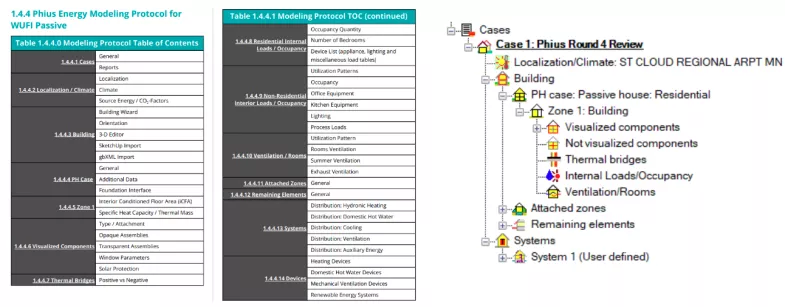Phius 2024 Standard Release: The Latest and Greatest
Phius Building Certification Manager Haley Kalvin-Gold provides a rundown of the newly released Phius 2024 standards and accompanying updates to the Phius Certification Guidebook.
Phius Building Certification Manager Haley Kalvin-Gold provides a rundown of the newly released Phius 2024 standards and accompanying updates to the Phius Certification Guidebook.
In case you missed it, the Phius 2024 Standards are finally here! Not only have we added a brand new standard for retrofit projects (REVIVE 2024), but we’ve also made significant improvements to the Guidebook based on feedback from our constituents and common certification hang-ups we’ve observed over the years. Read on for a high-level overview of how the standard requirements have changed since 2021, and read even further to learn how to navigate the new-and-improved Phius Certification Guidebook v24.1.0.
With each new standard release (every 3 years), Phius re-optimizes the Performance Criteria Targets (including space conditioning and source energy) to account for several variables that change over time, including:
The most notable changes to the Prescriptive Path have been made to the new Phius CORE Prescriptive 2024 Checklist, which is now available for use. A list of in-depth updates can be found within the Checklist under the “Update tracker” tab. To summarize the major updates:
General updates were made to the process and expected roles of Phius Certified Raters and Verifiers. The updates that have been made are intended to support Raters & Verifiers on site and improve communication among the entire project team during construction and Final Certification review.
For details on all required co-requisite program versions and guidance, please refer to following sections of the new Guidebook v24.1.0:
The Phius REVIVE 2024 Standard was released in July, 2024, and is entirely new compared to Phius REVIVE 2021, having its own unique requirements that are completely independent of the new construction standard requirements. The primary goals of this standard are resilience, occupant health, and decarbonization, all while balancing the ADORB cost of the project (Annualized Decarbonization of Retrofitted Buildings) and, as always, making quality assurance and transparency a priority. Please take time to review the resources at the link above, and refer to Section 3 of the new Guidebook for guidance on navigating the certification process for REVIVE 2024 Projects.
To keep consistent, we’ve done our best to structure our guidance for REVIVE 2024 in alignment with our guidance for the other standards. The major process difference between this new standard and the other standards is the addition of the Assessment & Investigation Phase, which occurs after it is decided that the building is a good candidate for retrofit and before any designing should begin.
The Phius 2024 Certification Guidebook was one of the largest undertakings for the release of the new Phius Standards. Our main goals for the guidebook overhaul were to:
To successfully meet these goals, we’ve split the Guidebook into 5 major sections, where the main 3 sections address the 3 available Phius Standards. For comparison, the 2021 Guidebook guidance was heavily focused on the New Construction (NC) Performance Path, with exceptions and some specialized guidance for the other standards sprinkled throughout, making it difficult to know where to start. To take it a step further, we’ve color coded the sections of the 2024 Guidebook in multiple places so the user can track which section they are in: the section headings, table headings, and footers on each page are color coded teal for NC - Performance Path, navy for NC - Prescriptive Path, and purple for REVIVE 2024 (Retrofits).


One of the most notable additions to the guidebook within these sections are the “Process Tips” (that are also color coded in alignment with the section they are in) as well as the “Exceptions” and “Examples” (which remain the same colors throughout).

Perhaps the most exciting of them all was the much-needed facelift made to the design and modeling guidance for certification compliance, including the WUFI Passive Modeling Protocol (Section 1.4.4) and the Prescriptive Checklist (Section 2.4.3).

We’ve even added intermittent “Tables of Contents” at the beginning of these longer sections to help with navigation (a seasoned CPHC will notice that the subheadings within these sections align with their respective compliance tool)! We’ve done our best to address everything that a CPHC might ask about when using these tools – including new guidance on the default values that should always remain unchanged.
With these improvements, our hope is that a brand new CPHC could crack open this section and model a project in WUFI from start to finish with minimal hiccups (of course we’re still always happy to help when help is needed).
